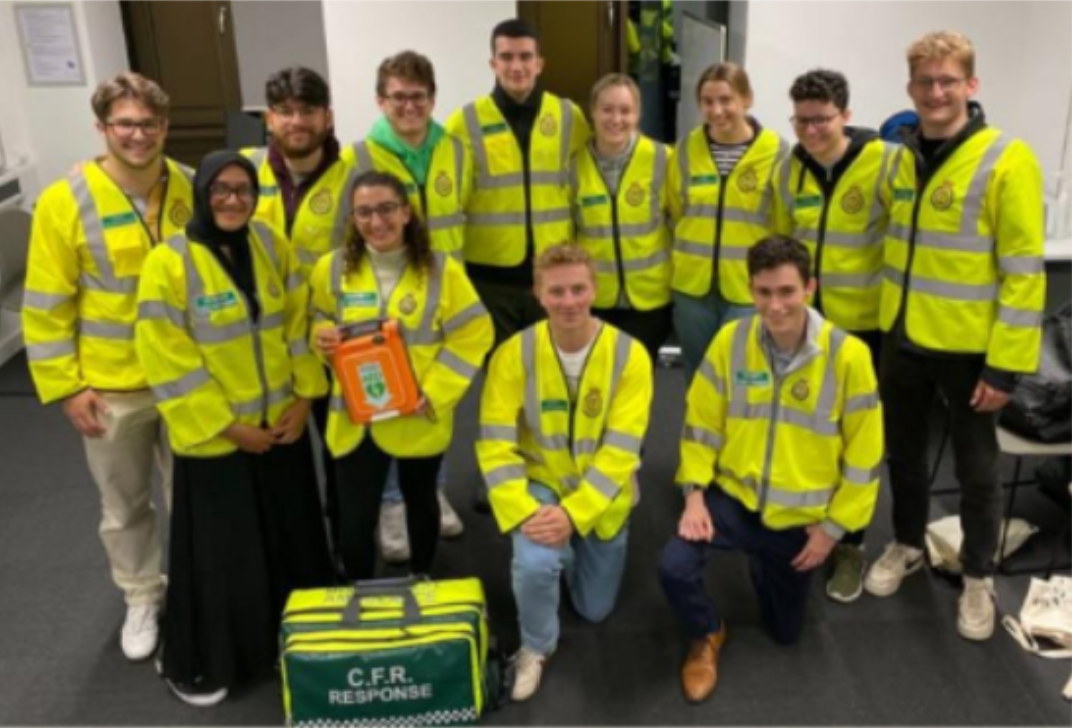Helpforce Champions 2023 Winner - North West Ambulance Service
6th October 2023

WINNER for Impact Project of the Year 2023
Video entry
North West Ambulance Service (NWAS) provided robust evidence of the impact that has been made by the Low Acuity Project and following this, made improvements for phase two. The evaluation of the Low Acuity Project shows that it can have an impact on people and organisations within health and care which reinforces the case for scaling up the project in more areas which with additional funding and development with AACE, will be implemented this year.
Data has been collected and turned into a robust report that proves that the project has made a quantifiable difference to stakeholders. An example of this that some CFR interventions mean patients did not end up unnecessarily in hospital and were instead provided with an alternative pathway such as going to the GP.
Given the current wait times for ambulances and ED, this would make a huge difference to the patient - as well as to the ambulance service and the acute hospital. Further analysis of patient experience is required to prove this. The evidence from this report is ‘head turning’ and would impress health leaders. The report demonstrates £78K estimated productivity gains and a 60% return on investment as well as 469 hours of ambulance time saved.
Executive summary from the Evaluation Report Phase 1
The project
North West Ambulance Service (NWAS) launched a Low Acuity CFR (Community First Responders) pilot project in April 2022, using funding received from the NHS England Voluntary Partnerships Team. The project aimed to ease pressure on the ambulance service by utilising trained CFR volunteers to respond to ‘low acuity’ (less urgent) emergency calls. Clinically led by a paramedic based in the Emergency Operations Centre (EOC), the Low-Acuity CFRs visit and manage many calls without the ambulance needing to attend.
The pilot was managed by Mark Evans at NWAS who is also Chair of the National Ambulance Service Responder Manager Group (NASRMG). The group has representatives from all UK ambulance trusts, many of which operate a similar role to Low Acuity CFR and are potentially interested in being involved with a broader evaluation. The NASMRG group is run from the Association of Ambulance Chief Executives (AACE). AACE has also recently worked with UK ambulance service members to produce a new strategy for volunteering.
Evaluation approach
Using Helpforce’s Insight and Impact service, NWAS are evaluating the Low Acuity CFR role across two phases. Phase 1, as reported in this document, analysed the performance data provided by NWAS over the pilot period to assess whether the role is delivering efficiencies for NWAS through ambulances no longer being required. Phase 2 aims to deliver a broader evaluation involving more ambulance trusts over a longer period, and against a broader set of beneficiaries and outcomes.
Key findings
Over the pilot project period of 25th April to 31st October 2022:
- Of the 375 Low Acuity CFR-assigned calls 77% resulted in non-ambulance attendance (290 out of 375).
- Freeing up a total of 469 hours of ambulance time.
- For category 3 calls, the average response time for Low Acuity CFRs was 99 minutes less than the NWAS Average.
Conclusions & recommendations
The findings of this rapid evaluation shows the positive difference that the Low Acuity CFR pilot project is making to the NWAS ambulance service in terms of non-ambulance attendance, lower patient wait times, and ambulance time saved. We recommend that this role is adopted across all UK ambulance trusts, and that the necessary funding is provided to enable the necessary scale-up of support staff and CFR volunteers.
